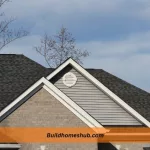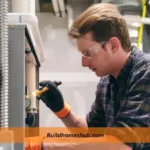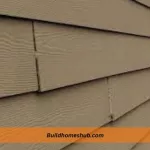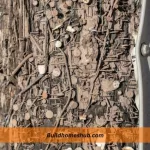Roofing shingles are a crucial component of a building’s roof, protecting the structure from the elements. While most people don’t think their roofing shingles can catch fire, it is a major concern for many others living in areas prone to wildfires. In this article, we will explore the question: do roofing shingles burn?
Yes, roofing shingles can burn under certain conditions. Asphalt shingles, which are the most common type of roofing shingles, are made of a layer of asphalt covered with granules. The asphalt in the shingles is flammable. And, the shingles can burn if they come into contact with an open flame or a heat source that is hot enough. However, asphalt shingles are generally resistant to fire and will not ignite easily.
There are several factors that can affect the flammability of roofing shingles. The age of the shingles can be a factor, as older shingles may be more prone to burning. The condition of the shingles can also be a factor, as damaged or deteriorated shingles may be more susceptible to ignition.
To help prevent the risk of fire on your roof, it is important to maintain your shingles and keep them in good condition. This includes checking for and repairing any damage or wear, and cleaning the shingles regularly. Remove any debris or dirt that could accumulate and increase the risk of fire. It is also a good idea to keep a fire extinguisher on hand in case of an emergency.
Which Type of Roofing Shingle is Most Flammable?
Wood shingles and shakes are generally considered to be the most flammable type of roofing material. They are made from thin slabs of wood that are cut into uniform shapes and sizes, and they are often used for their natural, rustic appearance. Because wood is a highly combustible material, wood shingles and shakes can ignite easily when exposed to high heat or flames.
Fiberglass shingles are also somewhat flammable, as they are made from a combination of fiberglass and asphalt, both of which can burn. However, they are generally more resistant to fire than wood shingles. The fiberglass helps to insulate the asphalt and reduce the amount of heat that is transferred to the shingle.
Asphalt shingles are the least flammable type of roofing material. They are made from asphalt-saturated felt that is coated with granules of ceramic or other fire-resistant materials. As a result, they are highly resistant to ignition and are often used in areas with strict fire codes.
It is important to note that all roofing materials have some level of flammability, and it is essential to follow proper installation and maintenance guidelines to minimize the risk of fire. Additionally, it is always a good idea to have a working smoke alarm and fire extinguisher on hand in case of a fire emergency.
Steps You Can Take to Minimize the Risk of Fire on Your Roof
1. Repair holes in your roof
First, you should repair any holes in your roof. This is an important step in preventing fire and other damage to your property. If there is a hole, it will let rainwater or snow melt into the attic, where it can cause mold or mildew growth that can lead to structural issues. You should also use the right type of material when repairing a hole in your roof.
2. Seal up any openings in the attic
The most important step you can take to minimize the risk of fire on your roof is to seal up any openings that might allow a fire to spread from outdoors into your attic. You want to make sure that no light, flames, or smoke can enter through cracks or crevices in the siding and roofing materials.
There are many suitable sealants available for use in sealing attic spaces. Some are made specifically for this purpose, while others can be used as well if they meet certain criteria.
3. Keep your gutters clean
Keep your gutters clean. Gutters are designed to keep rainwater from getting into your home and causing damage, but they also serve as a fire hazard. If leaves, twigs, and other debris get trapped in your gutters. they can catch on fire easily.
To minimize this risk, install a gutter guard. This product is easy to install and will keep the leaves out of your gutters. It’s especially important if you have trees near your house because they tend to drop lots of leaves during the autumn months.
4. Never run electrical cords along the roof
Never run electrical cords along the roof. To avoid the risk of fire, never run electrical cords on or near your roof. Electrical cords are a tripping hazard and can be damaged by materials such as shingles and flashing. Cords can also be damaged by tools and equipment like ladders or sprayers that are used during construction or maintenance work.
5. Don’t store or throw away combustible items on your roof
Don’t store or throw away combustible items on your roof. This includes things like leaves, paper, and dry grass, which are all highly flammable. If you find yourself with an abundance of these items on your property, it’s best to get them off the property as soon as possible.
Don’t store or throw away combustible items in your attic. As far as fire hazards go, this is one of the biggest ones for roofs. When there’s a fire in an attic, the flames can easily spread down into the house without anyone noticing until it’s too late.
It’s important to keep a close eye on what goes into your attic so that you don’t accidentally start a fire while cleaning up or storing furniture and other household items up there. Don’t store or throw away combustible items near your chimney/vent pipes. You never know when something might come loose during cleaning/maintenance work.
6. Pick up small pets and make sure they don’t have access to the roof.
Small pets like cats and dogs can be a fire risk. While they are usually content to stay near the ground, small animals have been known to wander up onto roofs as well. In addition, with their natural curiosity, they may find ways up there themselves. If you have small pets that roam freely around your home and yard, it is important to keep them away from the roof at all times.
7. Fire Safety When Doing Repairs and Installations
When you are doing repairs, installations, or maintenance of any kind on the roof, there are certain things to keep in mind. Fire safety is one of them.
Never use a torch on your roof, whether it’s for welding, cutting or heating something up. Locate all wiring before you start working so that you don’t cut through it by mistake. Use a fireproof ladder when climbing up onto your roof and don’t smoke while finishing up your work there either.
8. Maintain the Chimney and Roof Vents
Your chimney and roof vents should be inspected on a regular basis. If you find that the chimney is damaged or has missing pieces, it should be repaired immediately by a professional. The same goes for damaged or missing parts on your roof vents. Chimneys and vents need to be cleaned annually in order to prevent the buildup of creosote that can lead to fire hazards.
Chimneys should also have caps installed at their tops to prevent rainwater from entering them and causing damage inside the structure.
9. Keep Trees Away from the Roof
One of the easiest ways to prevent a fire on your roof is to keep trees trimmed and away from the structure. If you have a tree or bush growing near the roof, it’s important that you don’t allow it to get too close.
The closer a tree grows, the greater chance there will be for debris and plant matter to drop into crevices or onto shingles. This can cause damage and make it much more likely that those branches will catch on fire later on, potentially causing significant damage.
Final Thoughts
Roofing shingles can burn under certain circumstances. They are made of various materials, including asphalt, wood, and fiberglass, which all have different flammability properties. Asphalt shingles are more resistant to burning than wood or fiberglass shingles. However, they can still ignite if exposed to high heat or flames.
It is important to follow proper installation and maintenance guidelines for your roofing material to minimize the risk of fire. Additionally, it is essential to have a working smoke alarm and fire extinguisher on hand in case of a fire emergency.
I like to think I can help you with all the information you need on home renovations and DIY tips. You should subscribe.











